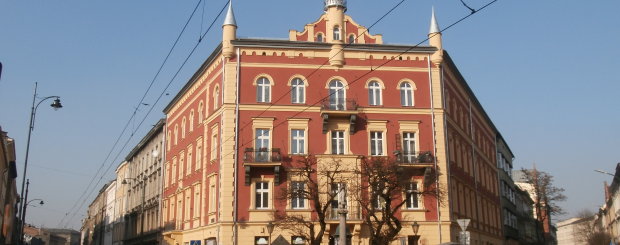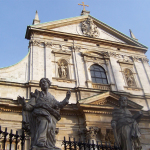Turkish house among the Catholic churches
On the corner of Dluga and Pedzichow streets stands a town house called the Turkish House. It was erected in the late 19th century. It features three minarets, one of which ends with a moon crescent. The voice of the muezzin is nowhere to be heard, no one uses the minarets for prayer. All that remains are the slender towers.
Its Turkish architectural features are the work of its owners of the beginning of the 20th century. Veteran of the 1863 Uprising against the Russian Empire and officer of the Ottoman Army, the then owner Artur Teodor Rayski returned to Poland in 1890. In 1914 he joined the Legion of Piłsudski but, as a Turkish citizen, he was called to join the Turkish Army in their fight against the former during World War I. He took part in the naval operations in the Dardanelles Campaign. He was promoted to Lieutenant rank and returned to Poland in 1919. Soon after he had to join another war – the Polish- Bolshevik war.
In the inter-war period he was head of the Aviation Department but his plans of modernising Polish aviation were interrupted in 1939. Despite his plea he was forbidden from taking part in the war. He traveled to Romania, France and England supervising the transportation of Polish gold to a safe location. Under the RAF he flew over North Africa and Asia. Following the death of General Sikorski he was named commander of the Polish Air Forces. After the war he never returned to Poland.
The heroism and strength of will of a man whom all called Commander long before he received the title will make the Turkish House a must-see for all history lovers.






